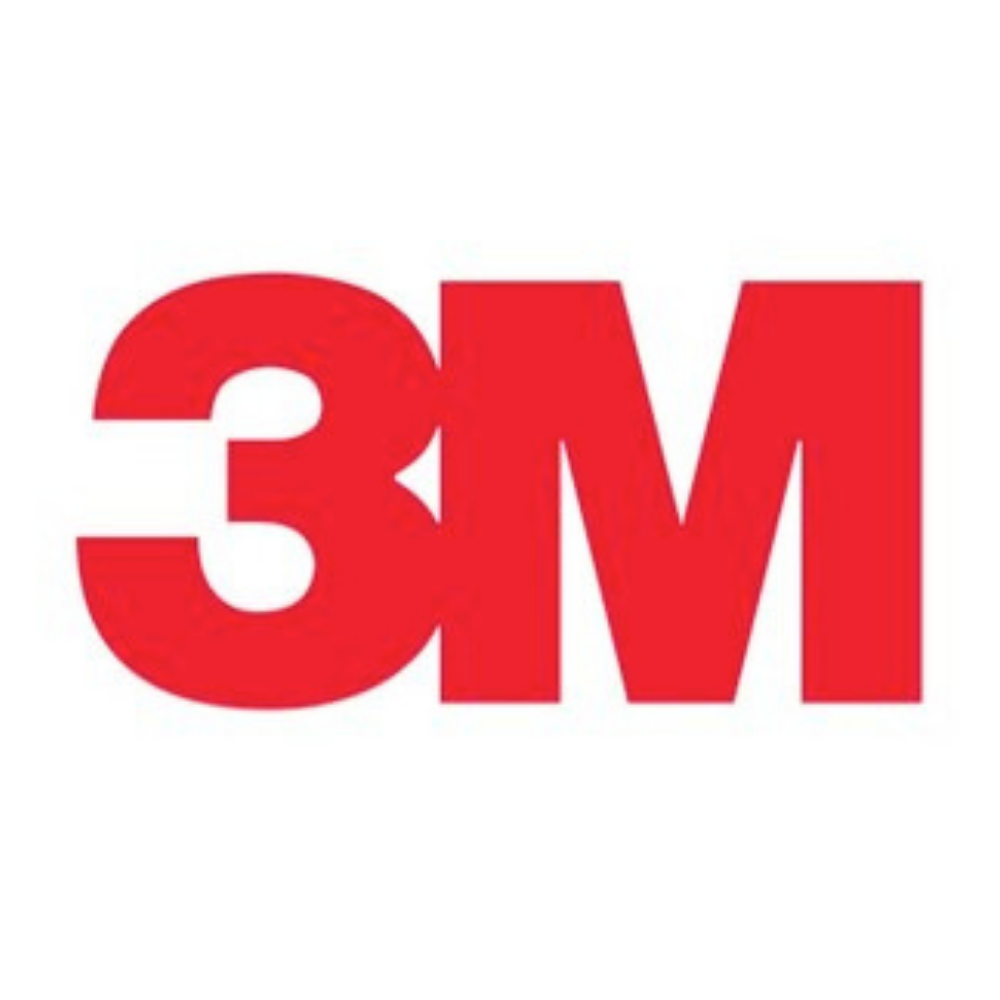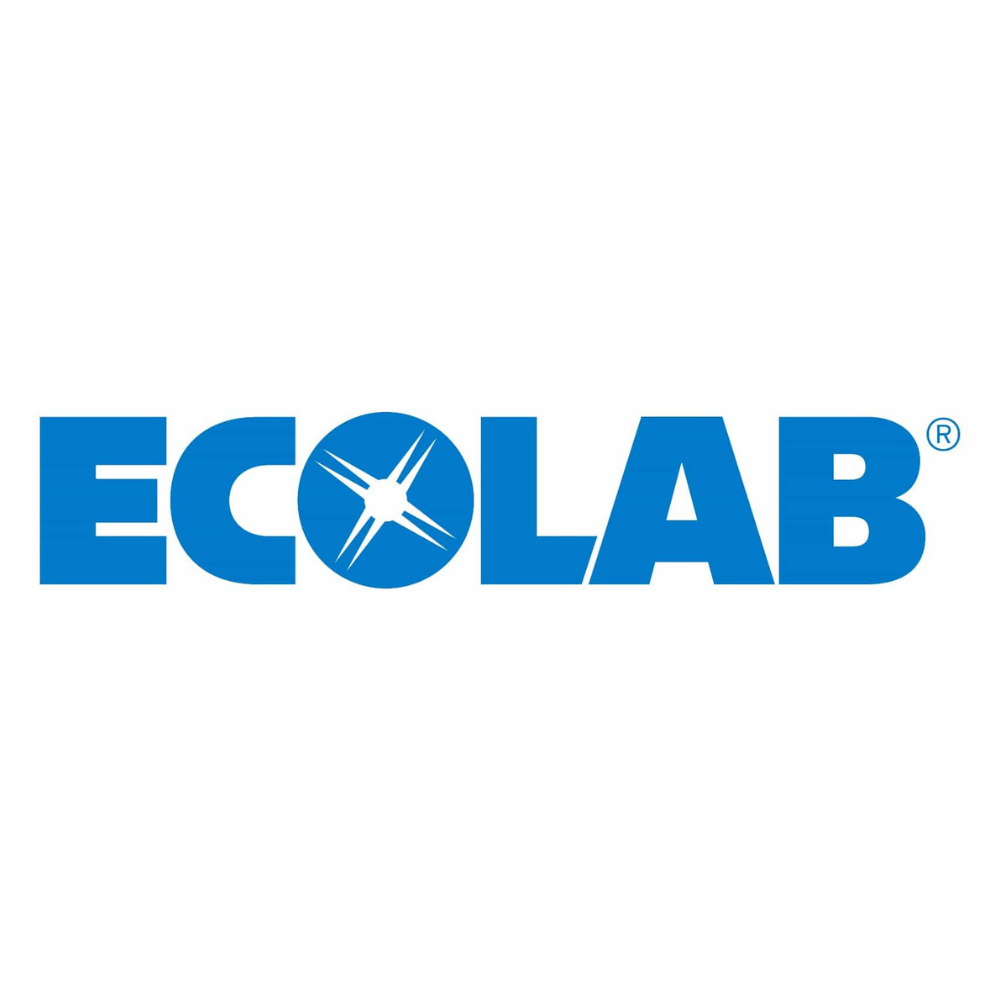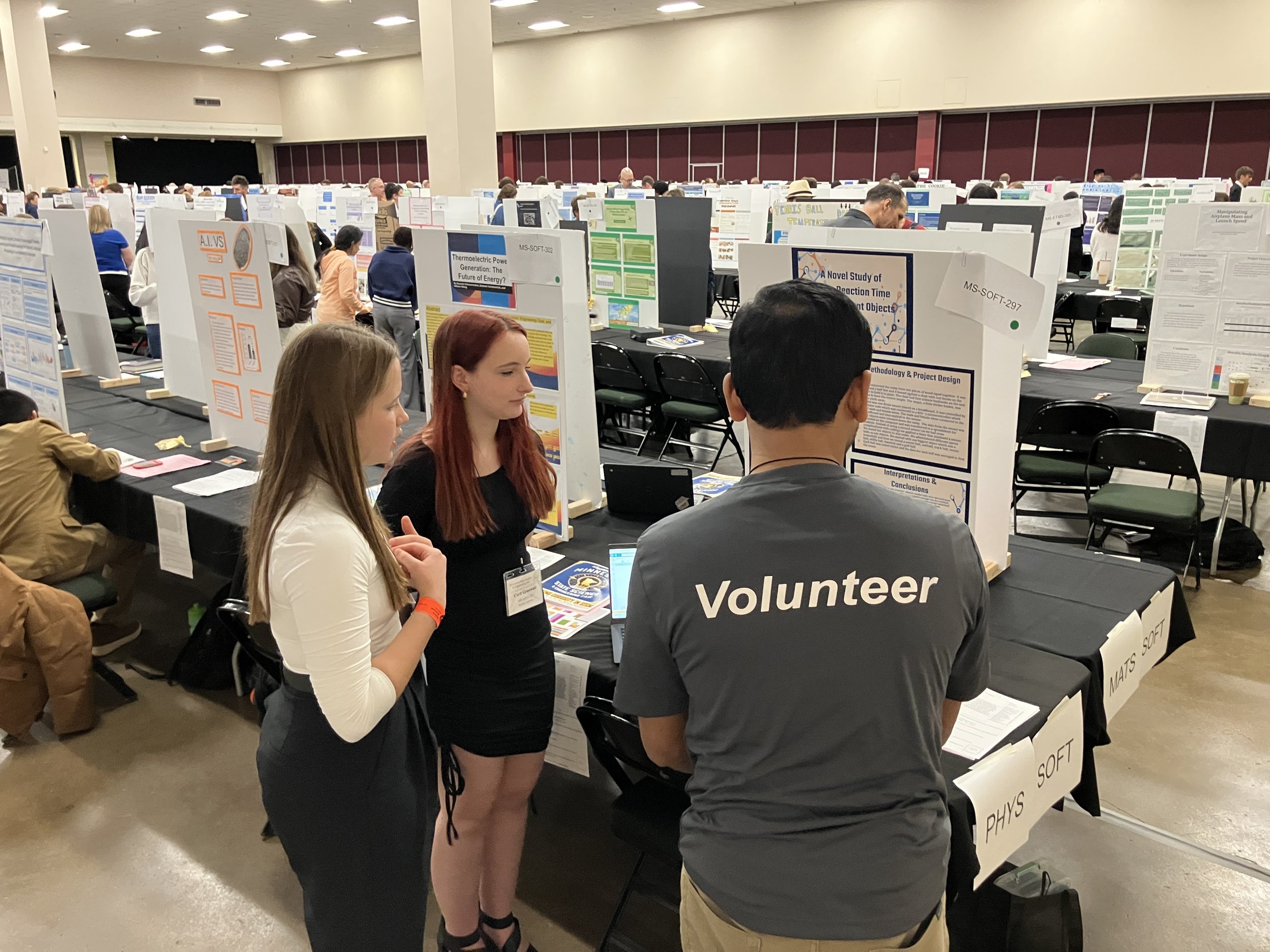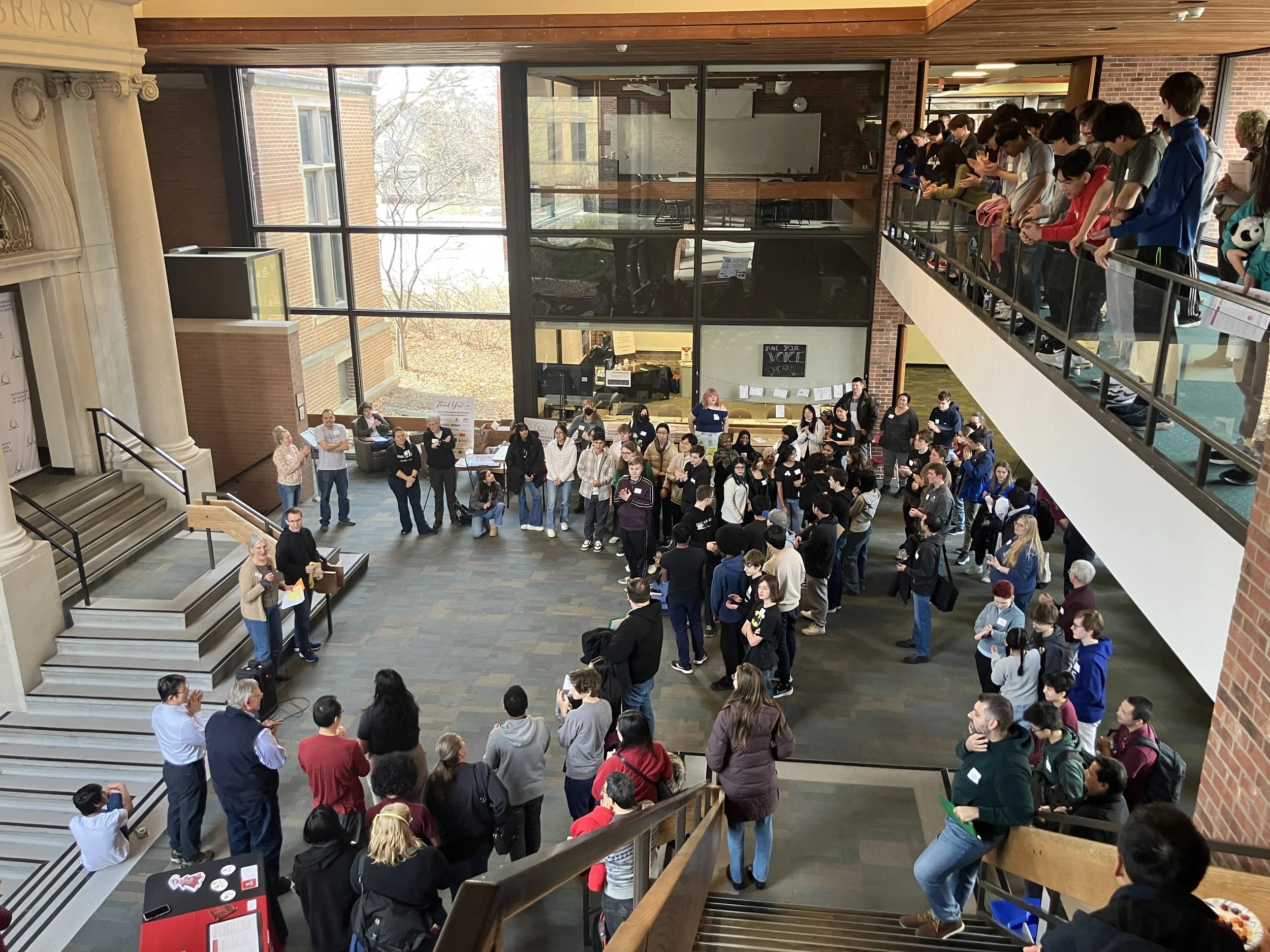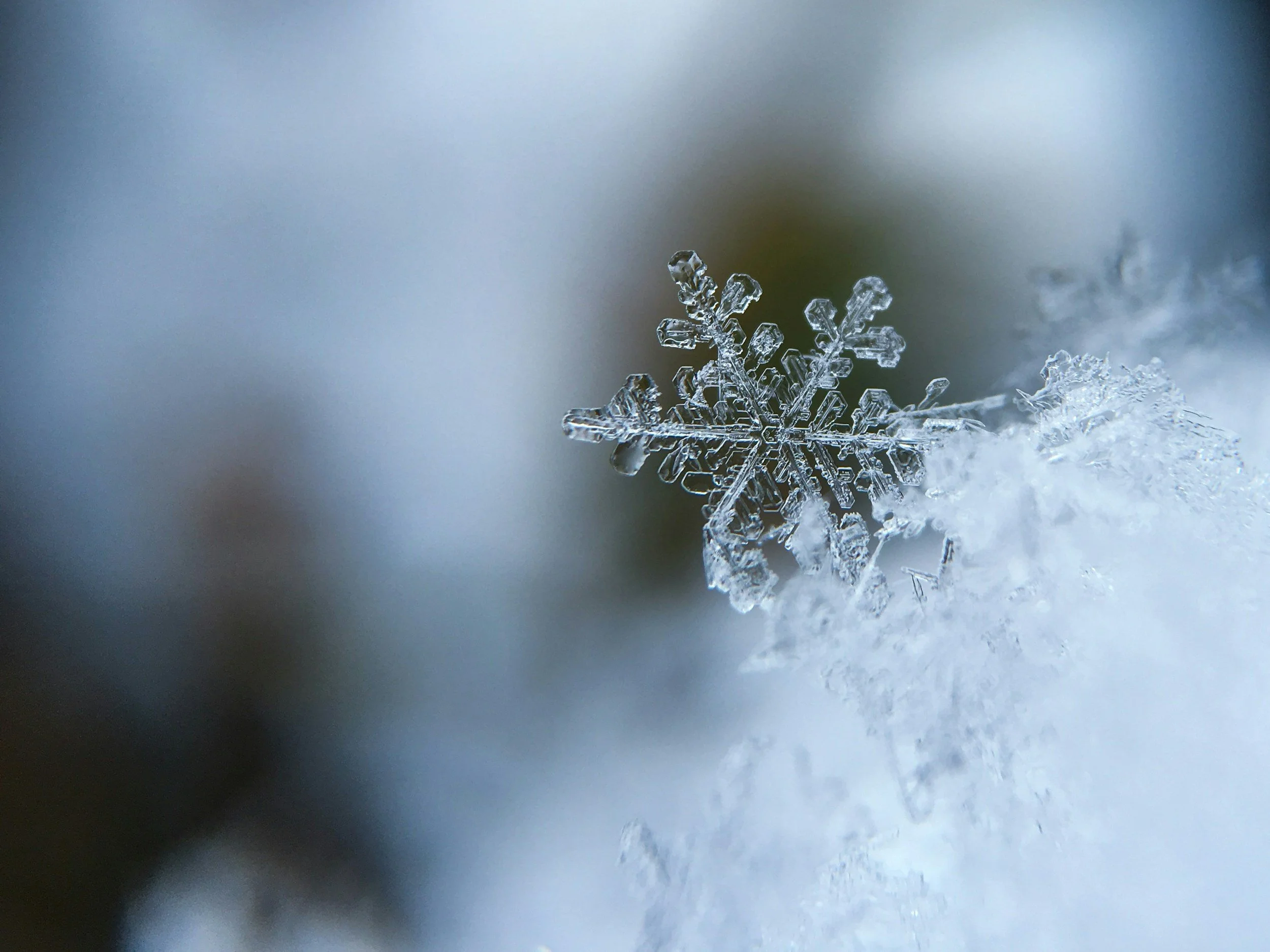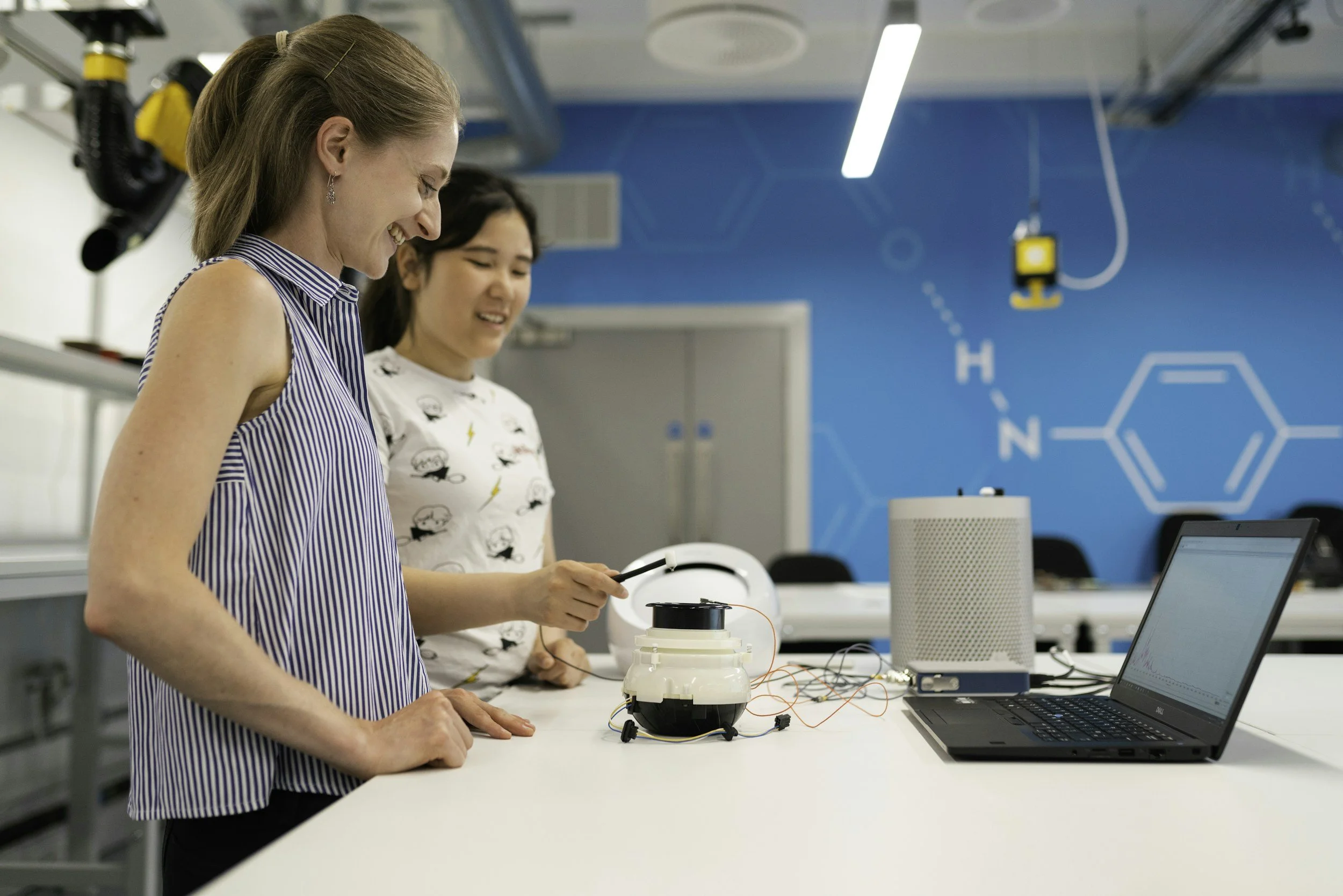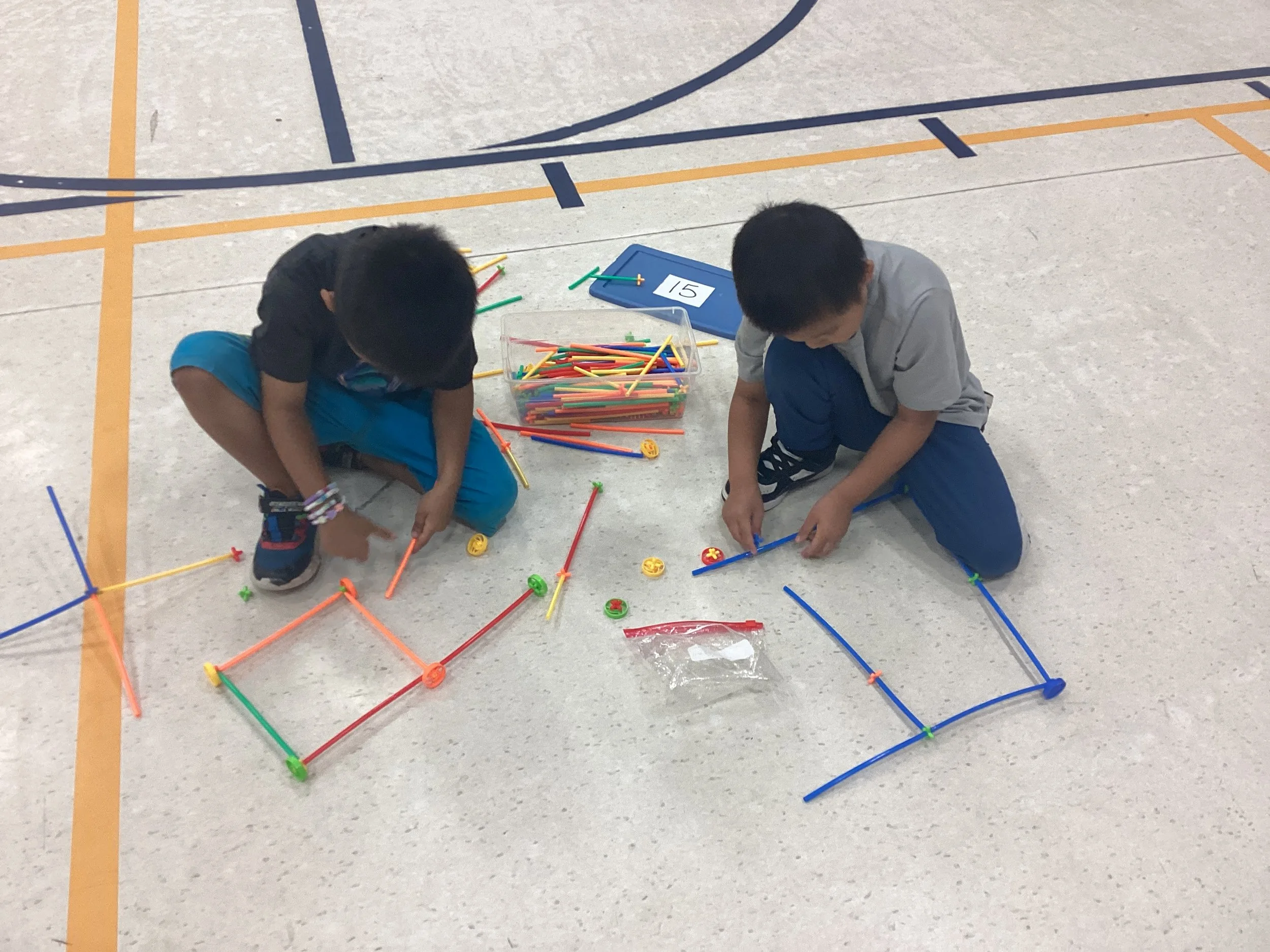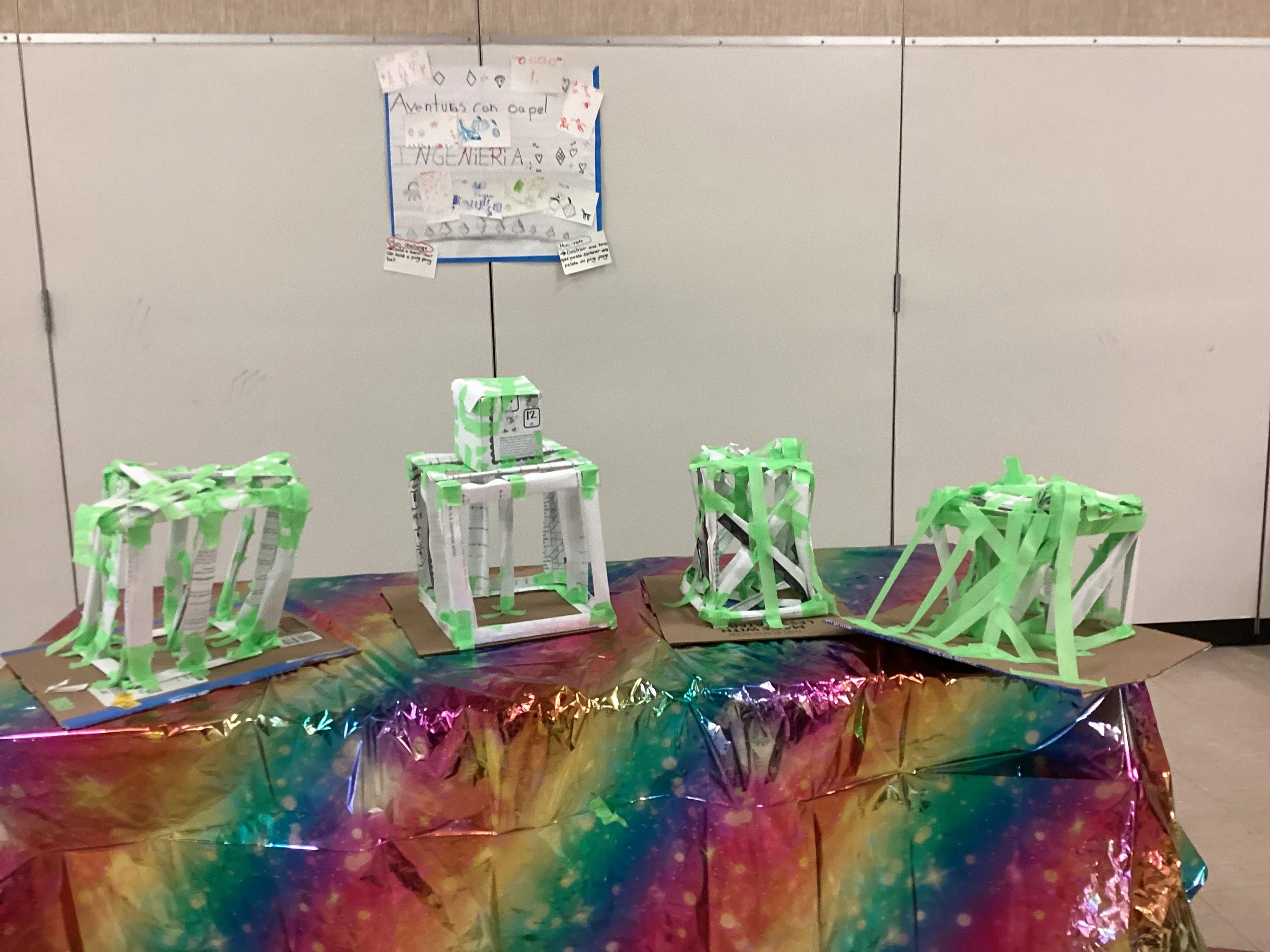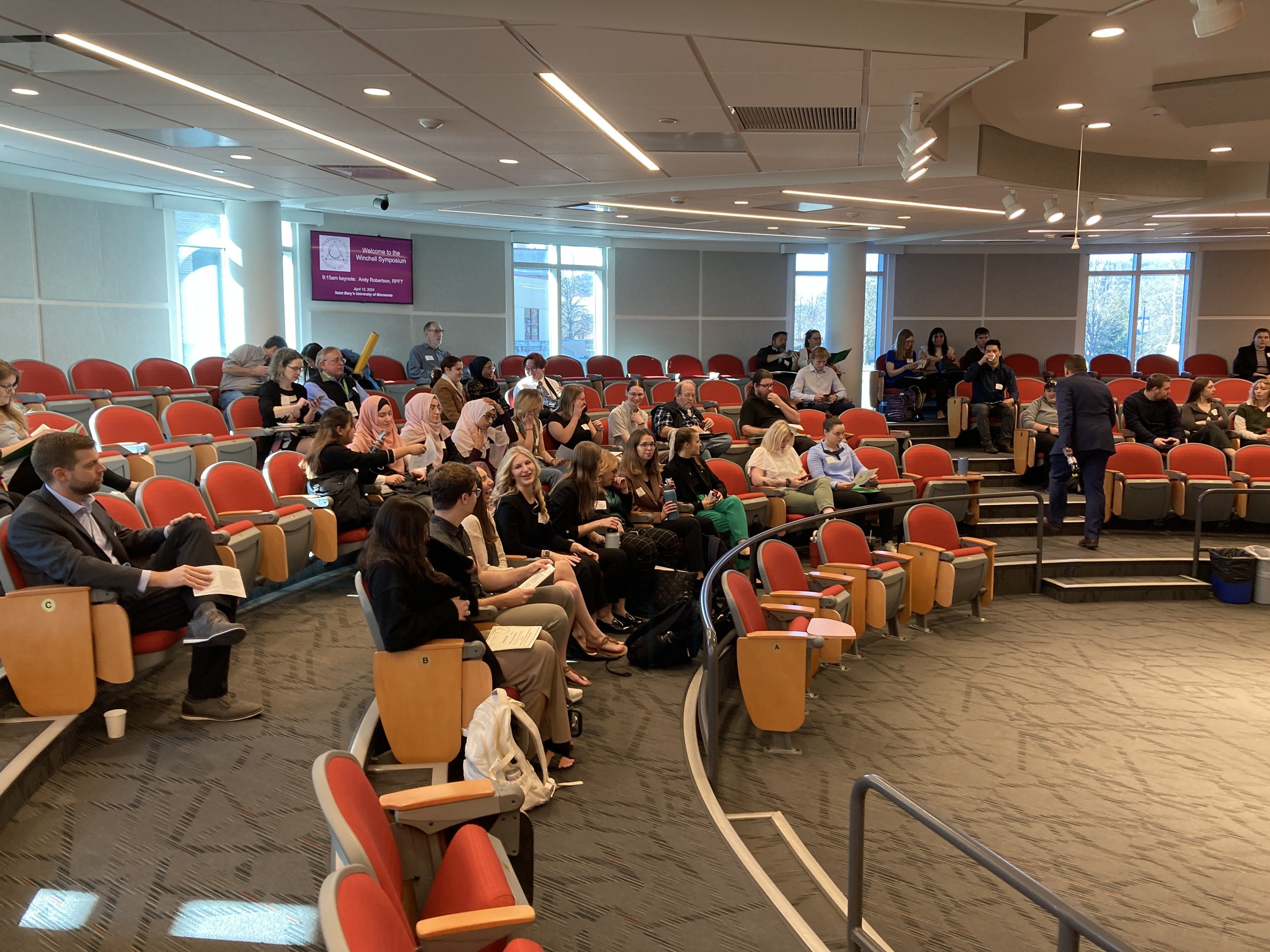Minnesota State Science & Engineering Fair
2025 Awards
On behalf of our sponsors, board of directors, and staff, the Minnesota Academy of Science congratulates all student presenters for their excellent research and presentations in the 2025 state competition!
This year, 434 students from across Minnesota were selected at Regional Science Fairs and competed at the Minnesota State Science & Engineering Fair. Over forty companies and organizations awarded more than $20,000 in cash prizes and other awards, gifts, and opportunities. Additionally, top projects advanced to the Regeneron International Science & Engineering Fair. See below for more information about each award and the 2025 award winners.
Scroll down to learn more about this year’s awards!
Minnesota Academy of Science Awards
Regeneron International Science and Engineering Fair (ISEF) Award
The Regeneron ISEF Award recognizes up to four of the fair’s top high school projects. The 2025 ISEF is scheduled to take place May 10-16 in Columbus, Ohio. ISEF is the world’s largest international pre-college science competition. More than 1,700 high school students from 70+ countries and territories showcase their research at ISEF.
2025 Minnesota State Science and Engineering Fair ISEF Finalists
HS-BEHA-117: Simran Kaur (Mankato), New AI-based approaches to assistive technology for individuals with autism-spectrum disorder
HS-BMED-148: Juniper Setterberg (Minneapolis), Scrutinizing Sam’s Split Structure: Characterizing novel methylation and cleavage pathways in borosin natural product precursor SamA1
HS-CBIO-118: Deling Chen (North Oaks), An Artificial Intelligence-Electrocardiogram Model for Prediction of Dementia—the Atherosclerosis Risk in Communities (ARIC) study
HS-CELL-124: Evan Morris (New Brighton), Shining Light on Synapses: A New Cost-Effective, Noninvasive Method to Advance Neurodegenerative Studies
HS-SOFT-226: Lucas Granucci (Shorewood), Bridging Linguistic Divides: Cross-Lingual Transfer Learning and Pseudo-Labeling for Natural Language Processing in Low-Resource Languages
2025 ISEF Alternates
HS-BMED-160: Sophia Parmele (Minnetonka), The development of ovalbumin mRNA lipid nanoparticles to induce immune tolerance for severe immune reactions
HS-ENBM-158: Daniel Crocker (Excelsior), Hybrid brain-computer interface with continuous learning and eye-tracking for adaptive mental command control
HS-ROBO-210: Olivia Liu (Plymouth), KRO (Keep Reef Oasis): An Innovative Online Tool For Coral Bleaching Analysis
HS-BMED-131: Graham Bailey (Minneapolis) & Samantha Dvorak (Plymouth), Pulling the Pressure Piece: Defining the Role of Piezo1 in a Mouse Model With Rheumatoid Arthritis
Grand Awards
The Grand Awards recognize excellence in STEM research at the middle school and high school level. The top 5% of projects presented at SSEF receive the Gold Award. The next 10% of projects receive the Silver Award and the next 15% of projects receive the Bronze Award. Projects are ranked according to judge scores and the competitiveness of the category in which students present.
Gold Award
High School
HS-CELL-263: Rohil Patel (Rochester), Investigating GPRC5A Agonists as Potential Therapeutic Agents for Asthma
HS-CELL-124: Evan Morris (New Brighton), Shining Light on Synapses: A New Cost-Effective, Noninvasive Method to Advance Neurodegenerative Studies
HS-BMED-160: Sophia Parmele (Minnetonka), The development of ovalbumin mRNA lipid nanoparticles to induce immune tolerance for severe immune reactions
HS-CELL-037: Alexis Scheid (Fargo), Simulating Diabetic Peripheral Neuropathy: A Cellular Model for Nerve Degeneration Studies
HS-SOFT-070: Huxley Westemeier (Minneapolis), Integrity: Generalized Artificial Image Classification with Noise Domain Localization
HS-MATS-341: Rathan Duggirala (Rochester), Optimizing Biological Paint Drying Time with Cellulose Nanocrystals and Chitosan Additives: A Comparative Study with Commercial Paints - Year 4
HS-MATS-077: Vick Tan (Eden Prairie), A Reusable Teabag for Bioremediation of Arsenic from Drinking Water
Middle School
MS-BEHA-255: Sia Sood (Rochester), Stress among Middle Schoolers: Does Quality Time with Friends and Family Matter?
MS-CHEM-068: Lila Foster (Minnetonka), Effective Treatment of Menstrual Blood Stains
MS-CHEM-319: Kianna O'Marro (Rochester), Lasya Kurra (Rochester) & Momo Hitosugi (Rochester), Cleo, no the Condensation!
MS-BMED-126: Arnav Bahl (Minneapolis), Antibiotic Overuse: Emergence of Resistant Bacterial Strains
MS-CHEM-325: Axel Laack (Rochester) & Jude Absah (Rochester), Does source of tap water affect levels of nitrate?
MS-SOFT-306: Victor Ayebo (Rochester), How does an AI perform in a Flight Sim compared to human pilot
MS-BEHA-086: Laura Hansen (Forest Lake), Surfing the Waves: Using Electroencephalography to Measure the Effectiveness of Binaural Beats on Brainwave Synchronization
MS-BMED-364: Riddhi Patel (Rochester), How do Different pH Levels Affect the Dissolution Rate of Over the Counter Drugs?
MS-CHEM-244: Steven Koutroupas (Bloomington), Icy Roads: A Study of Salt Deicers
MS-ETSD-261: Janet Njeru (Rochester), Boda Boda Basics Part I: Designing a Practical Helmet for use in Developing Counties
Silver Award
High School
HS-ROBO-229: Ethan Finch (Afton), Coding AI to Enhance Speech Therapy
HS-CHEM-081: Dawson Miller (Shorewood) & Caleb Li (Plymouth), Farewell Forever: Degradation of Pentadecafluorooctanoic Acid Using UV-C Light and Titanium Dioxide
HS-ENEV-200: John Liu (St. Paul), Solar-Enhanced Biomass-based Filtration System for Removing Microplastics and Heavy Metals
HS-CBIO-145: Riddhi Pritam Singhvi (Woodbury), Decoding Diabetes: Harnessing AI to Accurately Predict Real-Time and Future Blood Glucose Levels For Diabetes Management Using Diet, Exercise, Insulin Intake, and Heart Rate Variability
HS-ETSD-217: Maximus Ren (Minneapolis), Protecting Critical Grid Infrastructure: An Automation Tool to Help Utility Companies Assess the Impact of Residential Electric Vehicle Charging on Distribution Transformers
HS-ENEV-187: Ellie Stroh (Minnetonka), An argument for overtopping breach modeling: a case study of the climate-resilience of the Lake Cliff dam in Dallas, Texas
HS-BEHA-051: Bersy Yonas (Saint Paul), CALM-R: Creating and Optimizing the Impact of a Multisensory Mental Wellness Space in Public Schools
HS-CHEM-137: Inga Wing (Minneapolis), Impact of PFAs Degradation on Fluorinated and Non-Fluorinated Ski Waxes
HS-PLNT-170: Selena Qiao (Plymouth) & Abigail Endres (Golden Valley), Turf Trouble: Does the DEET in bug repellent really kill grass? Year II
HS-ETSD-206: Patrick Eyres (Golden Valley) & Henry Sabo (Hopkins), Memory Maze: Creating a modified T-maze to allow investigation of spatial navigation in mouse cerebral cortex
HS-CHEM-177: Alyssa Wang (Woodbury), Development of edible active coating films from agro-waste for produce preservation
HS-EBED-123: Shagun Shrivastava (Eden Prairie), In Search of Sound: Creating Solutions for Sound Localization Challenges Using BCI and ESB 32 to Aid Spatial Hearing Loss - Year 2
HS-ENBM-168: Mira Jayant (Excelsior), HOPE: A Novel Automated Device for Hemorrhage Control in Pediatric Firearm Emergencies
HS-MATS-072: Maxwell Kaung (Minnetonka), Analysis of bio-polymeric wet-end paper additives in the context of origami folding applications
Middle School
MS-ENBM-316: Aditi Sriram (Rochester), Artifix-CNN: A Novel Convolutional Neural Network to Improve Accuracy of Photoplethysmography Heart Rate
MS-BEHA-249: Emma Maleszewski (Rochester) & Vivien LeQuire (Rochester), How Font Style Affects Middle Schooler's Comprehension and Retention of Text
MS-BMED-274: Winnie Niu (Rochester), Evaluating the Interoperability of a Multiple Sclerosis (MS)-Trained Neural Network for Glioblastoma Lesion Detection in MRI
MS-PLNT-157: Olivia Xinrui Zhou (Eden Prairie), Magnetic Garden: Hidden Force Behind Seed Growth
MS-BMED-305: Maria Kenderian (Rochester), Effect of Artificial Food Ingredients on Health: Using Daphnia Magna as a Model
MS-PLNT-136: Alex Rajkumar Samba (Edina), Can Plants Survive Drought Conditions Through Hydrogels?
MS-BEHA-090: Georgia Gibbons (St. Paul), Do Different Colors Affect Your Score When Test Taking
MS-ENBM-337: Colleen Mahr (Rochester), Helping diagnose corneal ulcers using AI machine learning
MS-CHEM-235: Bailey Blum (Elk River), The Cookie Monster
MS-MATS-291: Mia Casper (Rochester), Fiber to Function: Which Yarn Works Best
MS-EBED-062: Dominik Fortin (Savage) & Elnur Yernar (Savage), SOD ("Save our Diver") Device
MS-PLNT-321: Adeline Scheid (Rochester), Angela Li (Rochester) & Ella Tommaso (Rochester), Perfume on Plants Project
MS-EAEV-185: Wyatt Parham (Marine on St. Croix), Studying the Function of gypsum Crystals in the Freshwater Algae Closterium using Light
MS-EBED-114: Anchit Kumar (Plymouth), Complete C Computer Using Python
MS-MCRO-042: Addi Hagen (Moorhead), Fountain of Growth A Study of the Micro bacterial Growth on Water Fountains
MS-PHYS-350: Henrik Carlson (Grand Rapids), Skate Sharpening Physics
MS-BEHA-057: Mitra Suriyanarayanan (Lakeville), Musical Minds: How Music Shapes the Task Performance and Emotional Behavior of Children with Autism?
MS-ENBM-323: Jai Olson (Rochester), Diya Kapoor (Rochester) & Yash Parikh (Rochester), Measuring and Mitigating High Ambient Noise Exposure in Rochester Public Schools
MS-EGSD-142: Suraj Jayant (Excelsior), Press to Power
MS-PLNT-140: Mariah Angeline Jones (Elk River), Feeling Salty The Impact of Salt on Plants
Bronze Award
High School
HS-PLNT-019: Kaitlyn Tyson (Sandstone), Tomato Triumph: Comparing Tomato Growth in Aquaponics, and Miracle-Gro Growth and Topsoil
HS-ENEV-192: Tvisha Talwar (Plymouth), Seeding Smarter: Utilizing a CNN to Assist in Optimizing the Planting of Cotton using Remote-Sensing Data and Forecasted Canopy Coverage
HS-SOFT-226: Lucas Granucci (Shorewood), Bridging Linguistic Divides: Cross-Lingual Transfer Learning and Pseudo-Labeling for Natural Language Processing in Low-Resource Languages
HS-BMED-102: Maren Overgaard (Lino Lakes), The Impact of Hypohydration on Concussion Severity
HS-BMED-139: Abigail Getnick & Kelan McKay (Bloomington), Immune Interference: Is aberrant DUX4 expression responsible for the downregulation of MHC class I genes stimulated by INF-γ ?
HS-MCRO-088: Madison Ambrose (Chanhassen), The effects of an artificial microbial consortium of B. Subtilis and transformed E. Coli on PET plastic degradation
HS-BEHA-363: Adam Jacobson (Grand Rapids), Lift Kid's Interest in Science!
HS-CELL-271: Srinidhi Babu (Rochester), Investigating the Role of p19Arf in Lung Cancer and Identifying Potential Gene-Targeted Therapies
HS-BMED-131: Graham Bailey (Minneapolis) & Samantha Dvorak (Plymouth), Pulling the Pressure Piece: Defining the Role of Piezo1 in a Mouse Model With Rheumatoid Arthritis
HS-ANIM-075: Isabella Wang (Woodbury), Hive Health: Characterizing Recapping and Hygienic Behavior in Honey Bees as a Natural Defense Mechanisms Against Varroa Mites and Viruses Using Real-Time PCR to Quantify Viral Levels
HS-PHYS-125: Anirudh Pulavarthi (Shakopee), Simulation of binary asteroid light curves
HS-BEHA-006: McKenna Gandhi (Cloquet), The Effects of Short Form Social Media Content on Compulsive Behavior and Attentional Functions
HS-CELL-209: Dmitry Bluvshtein (Minneapolis), Effect of Food Matrices on Yeast Health in Long-Term Stressful Environments
HS-BMED-107: Amanda Hsu (Saint Paul), The effect of capsaicin on the heart rate of Daphnia magna under induced photoperiod stress
HS-EAEV-100: Savanna Larson (Minnetonka) & Jos Buffington (Excelsior), PaleoENM: A novel machine learning model for understanding the Cretaceous analog for ecosystem disruption by future climate change
HS-SOFT-222: Keona Laurence (Plymouth), Predict Prevent: Leveraging AI for Early Intervention for Children's Mental Health Crises
HS-ENEV-023: Ethan Lavan (Cloquet), Determining the Reaction Time of Sulfide Removal for Large-Scale Water Treatment
HS-CBIO-180: Carmen Papp (Minnetonka), COVID-19 response in humanitarian settings: A novel case study of the Za’atari refugee camp after the release of the COVID-19 vaccine
HS-ENBM-163: Adeline Lovaas (Minneapolis) & Pranika Kumar (Edina), Computationally Conquering Cancer: Engineering enzymes for pain-free cancer treatment
HS-PHYS-344: Reva Patel (Rochester), Optimizing Wavelengths of Light for Accurate Measurement of Sucrose Concentration through Laser Transmission
HS-BMED-148: Juniper Setterberg (Minneapolis), Scrutinizing Sam’s Split Structure: Characterizing novel methylation and cleavage pathways in borosin natural product precursor SamA1
Middle School
MS-ENEV-074: Arika Kundu (Eden Prairie), CRISP — Complete Real Time Intelligent Spoilage Prevention
MS-PHYS-010: Gianna Stahl (Cloquet), Can the inverse square law be used to measure the distance of a known object (a lamp) to indirectly determine the distance of an unknown object (a star)?
MS-MATS-189: Kaia Wieneke (St. Paul), What Wire Material Generates the Greatest Amount of Electromagnetic Force?
MS-BEHA-307: Charlotte Noseworthy (Rochester), What music genre produces the most dopamine
MS-EAEV-286: Arav Goyal (Rochester), How Effective are Hydrogels in Conserving Water?
MS-CHEM-167: Kimberly Hernandez (Richfield), The Muffin War: Baking Powder vs. Baking Soda
MS-EAEV-095: Joshua Mills (Mound), Big Waves and Shifting Sands - How Waves Impact Water Quality
MS-MATS-202: Sam Van Gemert (Saint Paul), Does the Type of Field Affect the Game of Softball?
MS-EGSD-135: Grace Mae Munkeby (Plymouth), Burning Daylight: How Does a Homemade Solar Air Heater Affect the Temperature of a Room?
MS-PLNT-144: Isabel Bandstra (Coon Rapids), Caffeination Vegetation
MS-PLNT-313: Charlie Flynn (Rochester), The Effects of Temperature on Plant Growth
MS-CHEM-133: Ada Bicking (Minneapolis) & Indigo Trimmer (Minneapolis), How Does the Surface Affect the Quality of a Fingerprint?
MS-SOFT-005: Gabriel Todd (Cloquet), What effect does a programmed interactive simulation of the process of photosynthesis have on student learning?
MS-ANIM-066: Olive Keefe (Minneapolis), Natural versus Chemical: Evaluating the Effectiveness of Cricket Control Methods
MS-CHEM-334: Evan Melnyczenko (Rochester) & Raana Cassady (Rochester), Bamboo and Bagasse Product Manufacture and Testing
MS-MATS-270: Lailey Kalantari (Rochester) & Harper Mueller (Rochester), Water Safe Swim Colors
MS-PLNT-132: Sophia Iordanoglou (Plymouth), Violet Holmes (Golden Valley) & Sumana Mangipudi (Plymouth), Plant vs. Microplastics: Microplastic Contamination in Soil
MS-ROBO-064: Alek Kokotovich (Savage), Expanding First Lego League Challenge (FLL-C) Robotics to Support Kids with Low Vision
MS-MCRO-033: Diane Hope Ronoh (Duluth), Organic Vs Non-Organic Fruits Rate of Decomposition
MS-CHEM-329: Brecklyn Grant (Rochester), How Does Cinnamon Gum Affect The PH Level Of Your Mouth Compared To Other Flavors Of Gum
MS-CHEM-357: Eleanor Ribikawskis (Rochester) & Vivian Priebe (Spring Valley), Does swimming pool water type effect your skin? (Using gelatin as a skin substitute)
MS-BEHA-041: Zoe Vander Vorst (West Fargo), Emotion in Technicolor: A Study on the Effect of Color on Emotion
MS-EAEV-254: Sanvitha Vallurupalli (Rochester), How Do Different Natural Filtration Materials Affect the Removal of Microplastics From Water?
MS-BEHA-285: Victoria Gwellem (Rochester), Memory at a glance: How Long Does Your Short-Term Memory Last?
MS-CHEM-246: Alia Eiler (Elk River), Sugary Drinks Can Save Your Life
MS-BMED-134: Sofia Rise (Rosemount), How Far Can You Go?
MS-CELL-327: Emnet Solen (Rochester), Natalie Fisk (Rochester) & Autumn Stelpflug (Rochester), How do Preservatives in Makeup Affect Bacteria Growth
MS-EAEV-143: Sam Honsa (Mendota Heights), How Do Different Types of Materials Affect the Temperature in Urban Areas
MS-EAEV-290: Kelsey Kurth (Rochester), Iris Coon (Rochester) & Elliana Johnson (Rochester), Which Liquid-Absorbing Material Cleans Oil from Water the Quickest?
Minnesota Academy of Science Board of Directors Award
The Minnesota Academy of Science Board of Directors Award is given to ten middle school students showing exceptional promise at the 2025 State Science and Engineering Fair. The prize is $50 and a certificate.
MS-BEHA-041: Zoe Vander Vorst (West Fargo), Emotion in Technicolor: A Study on the Effect of Color on Emotion
MS-ANIM-003: Annaleigh Wargin (Cloquet) & Bella Jones (Cloquet), Dog Delima: What effect does walking your dog with a harness vs. a leash have on dog behavior?
MS-ETSD-261: Janet Njeru (Rochester), Boda Boda Basics Part I: Designing a Practical Helmet for use in Developing Counties
MS-ETSD-251: Parker Pearson (Rochester) & Evan Erbsen (Rochester), How does the shape of the fins affect the flight of a model rocket?
MS-BEHA-280: Jack Church (Rochester), How Does Music Affect Heart Rate? A Simple Study on human reactions to music
MS-PHYS-120: Connor Malsam (Excelsior), The Effects of Color and Light on Heat
MS-ANIM-066: Olive Keefe (Minneapolis), Natural versus Chemical: Evaluating the Effectiveness of Cricket Control Methods
MS-BMED-288: Ryan Mahr (Rochester), Does the type of screen time activity affect eye strain as measured by a novel blink rate detector?
Minnesota Junior Academy of Science
The Minnesota Junior Academy of Science (MJAS). is an honorary society and leadership group of high school and college students from Minnesota who have demonstrated excellence in STEM research at the high school level. Students who win MN State Science & Engineering Fair Gold Awards or become ISEF Finalists from Minnesota are automatically invited to join. Other interested high school students may apply!
Learn more about the MJAS and current members and apply/register at mnmas.org/junior-academy.
Medtronic Awards
The Minnesota Academy of Science is grateful to Medtronic, the Premier Sponsor of the 2025 Minnesota State Science and Engineering Fair.
All award winners receive an exclusive invitation to the Medtronic Tech Fellows Day.
Medtronic Innovation Award
The Medtronic Innovation Award recognizes students whose projects exemplify excellence through innovative outside-the-box ideas, self-motivated independent work, passion for discovery and science, and the potential to impact their category or the world.
First Place High School ($750 and certificate):
HS-CBIO-184: Milan Darji (Eden Prairie), Custom Enzymes to Custom Care: Ushering in the Era of Personalized Medicine Using a Novel Approach for Engineering Enzyme Specificity
Second Place High School ($500 and certificate):
HS-MATS-341: Rathan Duggirala (Rochester), Optimizing Biological Paint Drying Time with Cellulose Nanocrystals and Chitosan Additives: A Comparative Study with Commercial Paints - Year 4
Third Place High School ($250 and certificate):
HS-MATS-077: Vick Tan (Eden Prairie), A Reusable Teabag for Bioremediation of Arsenic from Drinking Water
First Place Middle School ($750 and certificate):
MS-CELL-191: Claire Carlson (Golden Valley), How well do different cleaning agents halt the anaerobic fermentation process of yeast and its carbon dioxide output?
Second Place Middle School ($500 and certificate):
MS-CELL-322: Lauren Chon (Rochester), Emmy Diehn (Rochester) & Hekla Thorvardardottir (Rochester), How Does Vaping Affect Tetrahymena Cells
Third Place Middle School ($250 and certificate):
MS-ENBM-337: Colleen Mahr (Rochester), Helping diagnose corneal ulcers using AI machine learning
Medtronic Technical Achievement Award
The Medtronic Technical Achievement Award recognizes students whose projects demonstrate excellence through imagination and inventiveness, tackling a challenging technical question, rigorous scientific inquiry and execution, and the potential to solve a technical problem.
Medtronic Technical Achievement Award: Biomedical Applications
High School Winner ($500 and certificate): HS-ENBM-168: Mira Jayant (Excelsior), HOPE: A Novel Automated Device for Hemorrhage Control in Pediatric Firearm Emergencies
Middle School Winner ($500 and certificate): MS-CBIO-310: Grace Kaspar (Rochester), How Can a Generative AI-Powered Virtual Agent and a Mobile App Improve Better Manage Health and Lifestyle of Patients with Thyroid Diseases?
Medtronic Technical Achievement Award: Science & Engineering
High School Winner ($500 and certificate): HS-CBIO-145: Riddhi Pritam Singhvi (Woodbury), Decoding Diabetes: Harnessing AI to Accurately Predict Real-Time and Future Blood Glucose Levels For Diabetes Management Using Diet, Exercise, Insulin Intake, and Heart Rate Variability
Middle School Winner ($500 and certificate): MS-BMED-305: Maria Kenderian (Rochester), Effect of Artificial Food Ingredients on Health: Using Daphnia Magna as a Model
Medtronic Technical Achievement Award: Sustainability
High School Winner ($500 and certificate): HS-ENEV-200: John Liu (St. Paul), Solar-Enhanced Biomass-based Filtration System for Removing Microplastics and Heavy Metals
Middle School Winner ($500 and certificate): MS-ENEV-065: Nora Fay (Thief River Falls), Water Tester
SPECIAL SPONSORED AWARDS
In alphabetical order
3M
3M science applied to life award
This award acknowledges students whose projects make a lasting, positive impact on their local or global community through innovation, creativity, and scientific exploration.
First Place High School ($500):
HS-BMED-155: Saloni Siddavatam (Eden Prairie), Investigating the Effects of Lactobacillus rhamnosus on Stress Response and Gut Microbial Health in C. elegans as a Model for Adolescent Mental Health
Second Place High School ($300):
HS-BEHA-117: Simran Kaur (Mankato), New AI-based approaches to assistive technology for individuals with autism-spectrum disorder
Third Place High School ($200):
HS-ROBO-198: Allie Sigmond (Minneapolis) & Benny Marmor (St. Louis Park), Health Evaluation Robot for Basil – HERB: A modular robotic system for detecting nutrient deficiency in greenhouse basil
First Place Middle School ($500):
MS-BEHA-057: Mitra Suriyanarayanan (Lakeville), Musical Minds: How Music Shapes the Task Performance and Emotional Behavior of Children with Autism?
Second Place Middle School ($300):
MS-CHEM-133: Ada Bicking (Minneapolis) & Indigo Trimmer (Minneapolis), How Does the Surface Affect the Quality of a Fingerprint?
Third Place Middle School ($200):
MS-ENBM-337: Colleen Mahr (Rochester), Helping diagnose corneal ulcers using AI machine learning
3M young inventor recognition
This award recognizes students who demonstrate unique resourcefulness in their approach to innovation, finding ways to do more with less, discovering new solutions to difficult problems.
High School Winners ($100 and certificate):
HS-BCHM-020: Peyton Werner (Cloquet), Hot Defense: Capsaicin vs. Traditional Antibiotics/ Disinfectant
HS-BEHA-051: Bersy Yonas (Saint Paul), CALM-R: Creating and Optimizing the Impact of a Multisensory Mental Wellness Space in Public Schools
HS-BEHA-096: Aizada Yernar (Savage), Determining the Role of 15-HETE in Anxiety and Gut-Brain Axis Dysfunction Using Drosophila Melanogaster models
HS-BEHA-363: Adam Jacobson (Grand Rapids), Lift Kid's Interest in Science!
HS-CELL-037: Alexis Scheid (Fargo), Simulating Diabetic Peripheral Neuropathy: A Cellular Model for Nerve Degeneration Studies
HS-CELL-209: Dmitry Bluvshtein (Minneapolis), Effect of Food Matrices on Yeast Health in Long-Term Stressful Environments
HS-CELL-271: Srinidhi Babu (Rochester), Investigating the Role of p19Arf in Lung Cancer and Identifying Potential Gene-Targeted Therapies
HS-ETSD-217: Maximus Ren (Minneapolis), Protecting Critical Grid Infrastructure: An Automation Tool to Help Utility Companies Assess the Impact of Residential Electric Vehicle Charging on Distribution Transformers
HS-MATS-341: Rathan Duggirala (Rochester), Optimizing Biological Paint Drying Time with Cellulose Nanocrystals and Chitosan Additives: A Comparative Study with Commercial Paints - Year 4
HS-PLNT-019: Kaitlyn Tyson (Sandstone), Tomato Triumph: Comparing Tomato Growth in Aquaponics, and Miracle-Gro Growth and Topsoil
HS-ROBO-218: Parth Rana (Plymouth) & Joseph David (Corcoran), Implementation and Comparative Evaluation of Machine Learning Approaches for the Early Detection of Plant Diseases
HS-ROBO-229: Ethan Finch (Afton), Coding AI to Enhance Speech Therapy
HS-SOFT-070: Huxley Westemeier (Minneapolis), Integrity: Generalized Artificial Image Classification with Noise Domain Localization
HS-SOFT-330: Baraah Alfasly (Rochester), Skin Lesion Diagnosis Using Supervised Deep Neural Networks and General Large Vision Models
HS-BMED-148: Juniper Setterberg (Minneapolis), Scrutinizing Sam’s Split Structure: Characterizing novel methylation and cleavage pathways in borosin natural product precursor SamA1
Middle School Winners ($100 and certificate):
MS-SOFT-005: Gabriel Todd (Cloquet), What effect does a programmed interactive simulation of the process of photosynthesis have on student learning?
MS-ROBO-064: Alek Kokotovich (Savage), Expanding First Lego League Challenge (FLL-C) Robotics to Support Kids with Low Vision
MS-SOFT-297: Carli Grunwald (Rochester) & Christina Young (Rochester), A Novel Study of Drone Reaction Time Using Different Objects
MS-PHYS-350: Henrik Carlson (Grand Rapids), Skate Sharpening Physics
MS-ENEV-266: Freeda Ali (Rochester), The Gift of Clean Water : A Solar Powered Water Purification System
MS-ENEV-074: Arika Kundu (Eden Prairie), CRISP — Complete Real Time Intelligent Spoilage Prevention
MS-ANIM-003: Annaleigh Wargin (Cloquet) & Bella Jones (Cloquet), Dog Delima: What effect does walking your dog with a harness vs. a leash have on dog behavior?
MS-ENBM-323 - Jai Olson (Rochester), Diya Kapoor (Rochester) & Yash Parikh (Rochester), Measuring and Mitigating High Ambient Noise Exposure in Rochester Public Schools
MS-ENBM-316: Aditi Sriram (Rochester), Artifix-CNN: A Novel Convolutional Neural Network to Improve Accuracy of Photoplethysmography Heart Rate
MS-EAEV-290: Kelsey Kurth (Rochester), Iris Coon (Rochester) & Elliana Johnson (Rochester), Which Liquid-Absorbing Material Cleans Oil from Water the Quickest?
MS-CHEM-156: Eleanor Langfeldt (Richfield), Does Temperature Affect the Amount of Time Glow Sticks Will Glow For?
MS-CHEM-068: Lila Foster (Minnetonka), Effective Treatment of Menstrual Blood Stains
MS-BMED-288: Ryan Mahr (Rochester), Does the type of screen time activity affect eye strain as measured by a novel blink rate detector?
MS-BMED-274: Winnie Niu (Rochester), Evaluating the Interoperability of a Multiple Sclerosis (MS)-Trained Neural Network for Glioblastoma Lesion Detection in MRI
MS-BMED-126: Arnav Bahl (Minneapolis), Antibiotic Overuse : Emergence of Resistant Bacterial Strains
American Chemical Society (ACS), Minnesota Section
Outstanding Experimental Project in CHemistry
This award recognizes an outstanding high school chemistry/biochemistry project. Honorable mentions will receive a one-year subscription to ChemMatters, the ACS publication for high school students.
High School Outstanding Project ($100): HS-CHEM-081: Dawson Miller (Shorewood) & Caleb Li (Plymouth), Farewell Forever: Degradation of Pentadecafluorooctanoic Acid Using UV-C Light and Titanium Dioxide
High School Honorable Mentions (subscription to ChemMatters):
HS-MATS-077: Vick Tan (Eden Prairie), A Reusable Teabag for Bioremediation of Arsenic from Drinking Water
HS-CHEM-091: Mehreen Najeeb (Maple Grove), 3D printing a tooth cap that effectively releases flouride in a controlled manner to heal cavities
HS-MATS-341: Rathan Duggirala (Rochester), Optimizing Biological Paint Drying Time with Cellulose Nanocrystals and Chitosan Additives: A Comparative Study with Commercial Paints - Year 4
Middle School Outstanding Project ($75): MS-CHEM-068: Lila Foster (Minnetonka), Effective Treatment of Menstrual Blood Stains
Middle School Honorable Mentions (subscription to ChemMatters):
MS-MATS-278: Ellinor Langel (Rochester), How Do Apple Gases React On Different Fruits?
MS-MATS-189: Kaia Wieneke (St. Paul), What Wire Material Generates the Greatest Amount of Electromagnetic Force?
American Fisheries Society, Minnesota Chapter
Aquatic Sciences achievement Award
This award recognizes projects focusing on aquatic science. Winners receive a book and a fishing pole.
High School:
HS-ENEV-187: Ellie Stroh (Minnetonka), An argument for overtopping breach modeling: a case study of the climate-resilience of the Lake Cliff dam in Dallas, Texas
HS-EAEV-100: Savanna Larson (Minnetonka) & Jos Buffington (Excelsior), PaleoENM: A novel machine learning model for understanding the Cretaceous analog for ecosystem disruption by future climate change
HS-ENEV-023: Ethan Lavan (Cloquet), Determining the Reaction Time of Sulfide Removal for Large-Scale Water Treatment
HS-ENEV-172: Agustin Robinson (Falcon Heights), Mycofiltration: Using Pleurotus Ostreatus to Remove Pollutants from Residential Runoff
HS-BMED-107: Amanda Hsu (Saint Paul), The effect of capsaicin on the heart rate of Daphnia magna under induced photoperiod stress
HS-EAEV-045: Isabella Wimmer (Richville), Phytoremediation of Escherichia coli in Aquatic Environments Using Elodea canadensis
HS-EAEV-028: Raelynn Wuollet (Cloquet), Duckweed types and their effects on contaminated water
HS-EAEV-105: Gustav Davidson (Chanhassen), Analyzing and measuring the potency of several removal methods of glyphosate within water
Middle School:
MS-ENEV-065: Nora Fay (Thief River Falls), Water Tester
MS-EAEV-095: Joshua Mills (Mound), Big Waves and Shifting Sands - How Waves Impact Water Quality
MS-CHEM-325: Axel Laack (Rochester) & Jude Absah (Rochester), Does source of tap water affect levels of nitrate?
MS-EAEV-147: Jameson Johnston (St. Paul), How Different Types of Buffer Zone Protect Shorelines
MS-EAEV-286: Arav Goyal (Rochester), How Effective are Hydrogels in Conserving Water?
MS-PHYS-299: Grady O'Brien (Rochester), Daniel McKie (Rochester) & Leyton McKimm (Rochester), How Does the Shape of the Boat Hull Affect the Boat's Drag Through the Water?
American Heart Association
American heart association community impact award
This award is given to a student whose project demonstrates community impact and equity in the pursuit of optimal health for all.
High School: HS-CBIO-180: Carmen Papp (Minnetonka), COVID-19 response in humanitarian settings: A novel case study of the Za’atari refugee camp after the release of the COVID-19 vaccine
Middle School: MS-ENEV-183: Mira Byers (Minneapolis), Trees: A Breath of Fresh Air
American Institute of Professional Geologists
Geology, Earth Science, Environmental Science, and Sustainability Excellence Award
This award is given to projects that demonstrate excellence in geology, earth science, environmental science or sustainability. Winners receive a geoscience handbook and a fossil specimen kit.
HS-EAEV-109: Graham Kailen Bennett (Minneapolis), Investigating Inequality from New Heights: Using Drone-Mounted PM2.5 Sensors to Characterize Air Pollution Sources, Pollutant Dispersion, and Socioeconomic Status
HS-ENEV-187: Ellie Stroh (Minnetonka), An argument for overtopping breach modeling: a case study of the climate-resilience of the Lake Cliff dam in Dallas, Texas
MS-EAEV-389: Fatoumata Marong (Elk River), Gardens in the Sky: How Greenroofs Impact Temperature
American Meteorological Society, Twin Cities Chapter
Twin Cities Meteorological Society award
The winners of this award receive a certificate and a weather radio.
HS-EAEV-109: Graham Kailen Bennett (Minneapolis), Investigating Inequality from New Heights: Using Drone-Mounted PM2.5 Sensors to Characterize Air Pollution Sources, Pollutant Dispersion, and Socioeconomic Status
HS-ENEV-187: Ellie Stroh (Minnetonka), An argument for overtopping breach modeling: a case study of the climate-resilience of the Lake Cliff dam in Dallas, Texas
American Psychological Association
Outstanding Research in Psychological Science
This award recognizes outstanding research in psychological science under the category of behavioral and social sciences or any category related to psychology at the high school level. The winner will receive a certificate and student membership.
HS-BEHA-117: Simran Kaur (Mankato), New AI-based approaches to assistive technology for individuals with autism-spectrum disorder
American Society of Plumbing Engineers
Best Display of Mechanical Engineering
This award is given to students at the high school level whose projects display the best use of mechanical engineering.
First Place ($350): HS-ENEV-200: John Liu (St. Paul), Solar-Enhanced Biomass-based Filtration System for Removing Microplastics and Heavy Metals
Second Place ($150): HS-EBED-119: Kevin Qiu (Maple Grove), Touch Sensor for Enhancing Robotic Elderly Care
Association for Women Geoscientists
Student Award for Geoscience Excellence
This award is given to a female student whose project exemplifies high standards of innovation and scientific excellence in the geosciences. Special consideration is given to projects that increase the public awareness of the geosciences, illustrate the interdisciplinary nature of the geosciences, and promote the sensitivity to the earth as a global system. The prize is a certificate.
HS-ENEV-187: Ellie Stroh (Minnetonka), An argument for overtopping breach modeling: a case study of the climate-resilience of the Lake Cliff dam in Dallas, Texas
Beckman Coulter
A global leader in advanced diagnostics, Beckman Coulter has challenged convention to elevate the diagnostic laboratory’s role in improving patient health for more than 80 years. Our mission is to Relentlessly Reimagine Healthcare, One Diagnosis at a Time – and we do this by applying the power of science, technology and the passion and creativity of our teams. We are honored to recognize students at the Minnesota State Science and Engineering Fair for their excellence in STEM fields. The Beckman Coulter scientists and engineers who volunteered as judges were impressed by the skill, knowledge and creativity of all of the award winners.
Beckman Coulter Awards FOR EXCELLENCE IN biology
High School ($1,000):
HS-CELL-124: Evan Morris (New Brighton), Shining Light on Synapses: A New Cost-Effective, Noninvasive Method to Advance Neurodegenerative Studies
HS-CELL-271: Srinidhi Babu (Rochester), Investigating the Role of p19Arf in Lung Cancer and Identifying Potential Gene-Targeted Therapies
Middle School ($500):
MS-CBIO-310: Grace Kaspar (Rochester), How Can a Generative AI-Powered Virtual Agent and a Mobile App Improve Better Manage Health and Lifestyle of Patients with Thyroid Diseases?
MS-BMED-126: Arnav Bahl (Minneapolis), Antibiotic Overuse : Emergence of Resistant Bacterial Strains
Beckman Coulter Awards FOR EXCELLENCE IN ENGINEERING
High School ($1,000):
HS-ENBM-168: Mira Jayant (Excelsior), HOPE: A Novel Automated Device for Hemorrhage Control in Pediatric Firearm Emergencies
HS-SOFT-070: Huxley Westemeier (Minneapolis), Integrity: Generalized Artificial Image Classification with Noise Domain Localization
Middle School ($500):
MS-ENBM-316: Aditi Sriram (Rochester), Artifix-CNN: A Novel Convolutional Neural Network to Improve Accuracy of Photoplethysmography Heart Rate
MS-ENBM-323 - Jai Olson (Rochester), Diya Kapoor (Rochester) & Yash Parikh (Rochester), Measuring and Mitigating High Ambient Noise Exposure in Rochester Public Schools
Bolton & Menk Inc.
Bolton & Menk Young Inventor Award
The Bolton & Menk Young Inventor Award was designed to recognize young inventors who demonstrate innovation, creative thinking, and technical skills to support the belief that all people should live in safe, sustainable, and beautiful communities. Winners receive a $500 award, a Bolton & Menk t-shirt, a certificate, and a job shadow at the Bolton & Menk location closest to their hometown.
HS-CHEM-177: Alyssa Wang (Woodbury), Development of edible active coating films from agro-waste for produce preservation
HS-ENEV-172: Agustin Robinson (Falcon Heights), Mycofiltration: Using Pleurotus Ostreatus to Remove Pollutants from Residential Runoff
HS-ENEV-200: John Liu (St. Paul), Solar-Enhanced Biomass-based Filtration System for Removing Microplastics and Heavy Metals
All students at the science fair, as well as the winner of this prize, are encouraged to showcase their coding projects at Coolest Projects Global. Find out how.
Broadcom Foundation
Broadcom Coding with Commitment Award
This award recognizes a middle school student whose project shows a remarkable passion to improve a problem or concern in their community and who has made the link with creating a solution or the start to a solution with coding/computation in their project. The award includes a $250 gift card and a Raspberry Pi Foundation Official Raspberry Pi Pico Kit.
MS-ROBO-064: Alek Kokotovich (Savage), Expanding First Lego League Challenge (FLL-C) Robotics to Support Kids with Low Vision
DiaSorin
DiaSorin is honored to participate in this year’s MSSEF! We know the MSSEF experience is an exceptional means to encourage young STEM scholars and we aim to contribute to the strength and numbers of its participants. These individuals are critical to industries like our own and we recognize them as vital global assets for growth and innovation.
DiaSorin, Inc. MERIT Award
Diasorin Merit Awards recognize the best independent work at the middle school level demonstrating the scientific method. The prize is $100.
MS-ANIM-066: Olive Keefe (Minneapolis), Natural versus Chemical: Evaluating the Effectiveness of Cricket Control Methods
MS-CHEM-167: Kimberly Hernandez (Richfield), The Muffin War: Baking Powder vs. Baking Soda
MS-PHYS-120: Connor Malsam (Excelsior), The Effects of Color and Light on Heat
MS-BMED-288: Ryan Mahr (Rochester), Does the type of screen time activity affect eye strain as measured by a novel blink rate detector?
MS-EGSD-135: Grace Mae Munkeby (Plymouth), Burning Daylight: How Does a Homemade Solar Air Heater Affect the Temperature of a Room?
DiaSorin, Inc. relativity award
The Diasorin, Inc. Relativity Award recognizes the best project involving the use of a family member or pet. The winner receives $30.
MS-BEHA-280: Jack Church (Rochester), How Does Music Affect Heart Rate? A Simple Study on human reactions to music.
Dr. Xue's Math School
Dr. Xue's Math School Special Creativity Award
This award recognizes best creative use of mathematics in pre-college science and research. The prize is a one hour free consultation session with Dr. Xue on academic planning or career development.
First Place: HS-MATH-223: Bryce Budijono (Excelsior), Redistricting the congressional districts of Wisconsin via Markov Chain Monte Carlo algorithm
Second Place: HS-MATH-053: Emmett Rose (Vernon Center), Shotgun Shell Composition and Resulting Spread
Ecolab
A trusted partner at nearly three million customer locations, Ecolab is the global leader in water, hygiene and infection prevention solutions and services. With annual sales of $12 billion and more than 44,000 associates, Ecolab delivers comprehensive solutions, data-driven insights and personalized service to advance food safety, maintain clean and safe environments, optimize water and energy use, and improve operational efficiencies and sustainability for customers in the food, healthcare, hospitality and industrial markets in more than 170 countries around the world.
Ecolab water vision award
Award winning projects are clearly presented, using excellent scientific data gathering and presentations practices, showcasing innovative ideas around the topics of water access, clean water, or water conservation.
High School ($700): HS-EAEV-045: Isabella Wimmer (Richville), Phytoremediation of Escherichia coli in Aquatic Environments Using Elodea canadensis
Middle School ($700): MS-ENEV-266: Freeda Ali (Rochester), The Gift of Clean Water : A Solar Powered Water Purification System
ecolab Food Safety Award
Award winning projects are clearly presented, using excellent scientific data gathering and presentations practices, showcasing innovative ideas around food safety—preserving the quality of food to prevent contamination and foodborne illness.
High School ($700): HS-CHEM-177: Alyssa Wang (Woodbury), Development of edible active coating films from agro-waste for produce preservation
Middle School ($700): MS-EAEV-276: Derrick Leng (Rochester), Observing Various Fruit Preservation Methods
Emerson Women’s Impact Network
Female in STEM Excellence Award
This award is given to one female high school student and one female middle school student. Winning projects are clearly presented, exemplify excellence in their category, and demonstrate high degree of difficulty, complexity, creativity, and innovation using excellent scientific data gathering and presentation practices.
High School ($500): HS-EBED-123: Shagun Shrivastava (Eden Prairie), In Search of Sound: Creating Solutions for Sound Localization Challenges Using BCI and ESB 32 to Aid Spatial Hearing Loss - Year 2
Middle School ($500): MS-ENEV-074: Arika Kundu (Eden Prairie), CRISP — Complete Real Time Intelligent Spoilage Prevention
Empowering Women in Science
Rosalind E. Franklin Perseverance in STEM Award
The Rosalind E. Franklin Perseverance in STEM Award recognizes woman-identifying or gender minority-identifying students who have demonstrated creativity, dedication, and perseverance in completing an exemplary research project. Winners receive $100.
High School: HS-EAEV-100: Savanna Larson (Minnetonka) & Jos Buffington (Excelsior), PaleoENM: A novel machine learning model for understanding the Cretaceous analog for ecosystem disruption by future climate change
Middle School: MS-CHEM-246: Alia Eiler (Elk River), Sugary Drinks Can Save Your Life
Good Chemistry
Good Chemistry Prize for Creativity
This award is given to a female middle school student whose project demonstrates creativity (including use of colors, textures, scents, etc). The winner receives a Good Chemistry candle refill kit, Good Chemistry perfume, waterbottle, and a framed certificate.
MS-BEHA-041: Zoe Vander Vorst (West Fargo), Emotion in Technicolor: A Study on the Effect of Color on Emotion
Hamline University Department of Physics
Excellence in Renewable Energy and Sustainability Award
This award recognizes high school students whose projects excel in utilizing renewable energy and driving sustainability initiatives. The prize is a certificate and a $100 scholarship toward a Hamline Physics Summer Camp (Young Physicist Camp or Microscope Adventure Camp).
HS-EAEV-194: Sriram Sureshkumar (Stillwater), From Carbon to Kilowatts: Biochar-Enhanced Electrochemical Systems for Simultaneous Carbon Sequestration and Power Generation
HS-EGSD-391: Vladimir Ditta (Blaine), Effect of Twist Angle on Savonius Turbine Efficiency
HS-EGSD-146: Amelia Klemme (Eden Prairie), Optimizing bioelectricity production efficiency in algal fuel cells
Institute of Food Technologists, Minnesota Section
Institute of technologists Food Science Award
This award recognizes projects related to food science. Learn more about careers in food science.
First Place High School ($500): HS-CHEM-177: Alyssa Wang (Woodbury), Development of edible active coating films from agro-waste for produce preservation
Second Place High School ($250): HS-CELL-209: Dmitry Bluvshtein (Minneapolis), Effect of Food Matrices on Yeast Health in Long-Term Stressful Environments
First Place Middle School ($500): MS-CHEM-167: Kimberly Hernandez (Richfield), The Muffin War: Baking Powder vs. Baking Soda
Second Place Middle School ($250): MS-MCRO-033: Diane Hope Ronoh (Duluth), Organic Vs Non-Organic Fruits Rate of Decomposition
Land O’ Lakes
Land O’Lakes Award for Food Innovation
For projects that demonstrate creativity, innovation, and excellence in the study of food science. The prize is $500.
High School Winners:
HS-ANIM-047: Evy Wagner (Richville), Various Egg Layer Feeds and Their Effect on Egg Production and Yolk Pigment
HS-CELL-209: Dmitry Bluvshtein (Minneapolis), Effect of Food Matrices on Yeast Health in Long-Term Stressful Environments
Middle School Winners:
MS-ENEV-074: Arika Kundu (Eden Prairie), CRISP — Complete Real Time Intelligent Spoilage Prevention
MS-CELL-191: Claire Carlson (Golden Valley), How well do different cleaning agents halt the anaerobic fermentation process of yeast and its carbon dioxide output?
Lemelson Foundation
Lemelson Early Inventor Prize
The Lemelson Early Inventor Prize highlights a young inventor at the middle school level whose project exemplifies the ideals of inventive thinking by identifying a challenge in their community and creating a solution that will improve the lives of others. The prize is $100 and a certificate.
MS-ENEV-266: Freeda Ali (Rochester), The Gift of Clean Water : A Solar Powered Water Purification System
Minnesota Environmental Health Association
Award for Excellence in Environmental Health Science
These awards recognize the best projects investigating environmental factors influencing public health.
First Place High School ($200):
HS-EAEV-109: Graham Kailen Bennett (Minneapolis), Investigating Inequality from New Heights: Using Drone-Mounted PM2.5 Sensors to Characterize Air Pollution Sources, Pollutant Dispersion, and Socioeconomic Status
Second Place High School ($100):
HS-EAEV-045: Isabella Wimmer (Richville), Phytoremediation of Escherichia coli in Aquatic Environments Using Elodea canadensis
Third Place High School ($50):
HS-ENEV-200: John Liu (St. Paul), Solar-Enhanced Biomass-based Filtration System for Removing Microplastics and Heavy Metals
First Place Middle School ($100):
MS-ENBM-323: Jai Olson (Rochester), Diya Kapoor (Rochester) & Yash Parikh (Rochester), Measuring and Mitigating High Ambient Noise Exposure in Rochester Public Schools
Second Place Middle School ($50):
MS-ENEV-074: Arika Kundu (Eden Prairie), CRISP — Complete Real Time Intelligent Spoilage Prevention
Muminah Nihaar Mohammed
The Humanity & Future Impact Award
This award recognizes the high school project that best shapes the future of health on a systemic, large-scale level, improving the lives of generations to come. The prize is $250.
HS-CELL-124: Evan Morris (New Brighton), Shining Light on Synapses: A New Cost-Effective, Noninvasive Method to Advance Neurodegenerative Studies
The Mosaic Innovation Award
This award honors the middle school project that embodies the power of collaboration, interdisciplinary thinking, and diverse talents in STEM by utilizing a fusion of skills to achieve their goal. The prize is $250.
MS-CELL-322: Lauren Chon (Rochester), Emmy Diehn (Rochester) & Hekla Thorvardardottir (Rochester), How Does Vaping Affect Tetrahymena Cells
National Aeronautics and Space Administration (NASA)
Earth Systems Science Award
The winning high school project incorporates studies including different spheres of the Earth system, their interactions, and change over time. The award is a certificate.
HS-EAEV-164: Nina Georgeson (Saint Paul), Local Waters, Global Impact: Phytoplankton and the Climate Crisis
National Oceanographic and Atmospheric Administration (NOAA)
Taking the Pulse of the Planet Award
This award recognizes a high school project with research that demonstrates the principles and technical innovations that offer the greatest understanding of the earth's dynamic processes. The award is a certificate.
HS-ENEV-192: Tvisha Talwar (Plymouth), Seeding Smarter: Utilizing a CNN to Assist in Optimizing the Planting of Cotton using Remote-Sensing Data and Forecasted Canopy Coverage
Regeneron
Regeneron Biomedical Science Award
This award recognizes an exceptional high school student scientist who not only demonstrates an impressive command of biomedical science and research but also embodies Regeneron’s core values and behaviors, known as The Regeneron Way. The winner receives $375 and a certificate.
HS-CBIO-184: Milan Darji (Eden Prairie), Custom Enzymes to Custom Care: Ushering in the Era of Personalized Medicine Using a Novel Approach for Engineering Enzyme Specificity
Ricoh
Sustainable Development Award
The winning project shows outstanding effort in addressing issues of environmental responsibility and sustainable development. The winner receives a certificate.
HS-ENEV-172: Agustin Robinson (Falcon Heights), Mycofiltration: Using Pleurotus Ostreatus to Remove Pollutants from Residential Runoff
Robocyclers
Outstanding Experimental Design Award
This award recognizes a project at the middle school level with an outstanding experimental design. The winner will receive $100 and a certificate.
MS-BMED-122: Mena Severt (Minneapolis), Does heal-all tincture actually heal all?
Science Museum of Minnesota
Science Communication Award
These awards recognize presenters who demonstrate the most effective communication of STEM concepts and principles in a project. Winners receive a one-year membership to the Science Museum of Minnesota.
HS-BMED-171: Zeal Kuku (Minnetonka), Experimentation of Ecdysterone on Faxonius virilis to determine the impact of hormone doping
HS-BEHA-051: Bersy Yonas (Saint Paul), CALM-R: Creating and Optimizing the Impact of a Multisensory Mental Wellness Space in Public Schools
HS-ANIM-071: Lam Le (Lakeville), The Impact of Heatwaves on the Foraging Behavior of Urban Ants: A Test on T. immigrans
MS-ENEV-074: Arika Kundu (Eden Prairie), CRISP — Complete Real Time Intelligent Spoilage Prevention
MS-MATS-189: Kaia Wieneke (St. Paul), What Wire Material Generates the Greatest Amount of Electromagnetic Force?
MS-ROBO-193: Kaila Kurien (Blaine), Car vs. Road
Society for In Vitro Biology (SIVB)
Outstanding Achievement for Ability and Creativity in In Vitro Biology
This award recognizes the most outstanding 11th grade student exhibiting in the areas of plant or animal in vitro biology or tissue culture. The award is a certificate and membership in SIVB.
HS-CELL-215: Jason Windels (Minnetonka), A novel treatment for cancer via synthetic gene transfection to express a recombinant protein apoptin, selectively inducing apoptosis in human breast cancer cells
Society for Science & Thermo Fisher Scientific
Thermo Fisher Scientific Junior Innovators Challenge
The top 10% of middle school projects receive certificates and an invitation to apply to the National Thermo Fisher Scientific Junior Innovators Challenge.
MS-BEHA-255: Sia Sood (Rochester), Stress among Middle Schoolers: Does Quality Time with Friends and Family Matter?
MS-CHEM-068: Lila Foster (Minnetonka), Effective Treatment of Menstrual Blood Stains
MS-CHEM-319: Kianna O'Marro (Rochester), Lasya Kurra (Rochester) & Momo Hitosugi (Rochester), Cleo, no the Condensation!
MS-BMED-126: Arnav Bahl (Minneapolis), Antibiotic Overuse: Emergence of Resistant Bacterial Strains
MS-CHEM-325: Axel Laack (Rochester) & Jude Absah (Rochester), Does source of tap water affect levels of nitrate?
MS-SOFT-306: Victor Ayebo (Rochester), How does an AI perform in a Flight Sim compared to human pilot
MS-BEHA-086: Laura Hansen (Forest Lake), Surfing the Waves: Using Electroencephalography to Measure the Effectiveness of Binaural Beats on Brainwave Synchronization
MS-BMED-364: Riddhi Patel (Rochester), How do Different pH Levels Affect the Dissolution Rate of Over the Counter Drugs?
MS-CHEM-244: Steven Koutroupas (Bloomington), Icy Roads: A Study of Salt Deicers
MS-ETSD-261: Janet Njeru (Rochester), Boda Boda Basics Part I: Designing a Practical Helmet for use in Developing Counties
MS-ENBM-316: Aditi Sriram (Rochester), Artifix-CNN: A Novel Convolutional Neural Network to Improve Accuracy of Photoplethysmography Heart Rate
MS-BEHA-249: Emma Maleszewski (Rochester) & Vivien LeQuire (Rochester), How Font Style Affects Middle Schooler's Comprehension and Retention of Text
MS-BMED-274: Winnie Niu (Rochester), Evaluating the Interoperability of a Multiple Sclerosis (MS)-Trained Neural Network for Glioblastoma Lesion Detection in MRI
MS-PLNT-157: Olivia Xinrui Zhou (Eden Prairie), Magnetic Garden: Hidden Force Behind Seed Growth
MS-BMED-305: Maria Kenderian (Rochester), Effect of Artificial Food Ingredients on Health: Using Daphnia Magna as a Model
MS-PLNT-136: Alex Rajkumar Samba (Edina), Can Plants Survive Drought Conditions Through Hydrogels?
MS-BEHA-090: Georgia Gibbons (St. Paul), Do Different Colors Affect Your Score When Test Taking
MS-ENBM-337: Colleen Mahr (Rochester), Helping diagnose corneal ulcers using AI machine learning
MS-CHEM-235: Bailey Blum (Elk River), The Cookie Monster
MS-MATS-291: Mia Casper (Rochester), Fiber to Function: Which Yarn Works Best
Kailey Soller
Woman in Science - Impact Award
This award is presented to a student who is expected to make an impact in the scientific world as demonstrated by their creative project idea, strong presentation skills, or unique way that they demonstrated the potential for their project to transfer into a product. The prize is a Women in Science book award and a $50 gift card.
High School: HS-EAEV-028: Raelynn Wuollet (Cloquet), Duckweed types and their effects on contaminated water
Middle School: MS-CHEM-161: Yailine Rosas Landa (Richfield), Does Fragrance of a Candle Impact Flame Height?
Thompson Family
Excellence in Obstacle Navigation
This award recognizes students who have demonstrated outstanding ability to deal with obstacles that came up during their project. The winners receive $50 and a certificate.
MS-SOFT-005: Gabriel Todd (Cloquet), What effect does a programmed interactive simulation of the process of photosynthesis have on student learning?
MS-CHEM-240: Audrey Strehler (Elk River), Magnificent Muffins: How Baking Powder Totals Impact The Rise of Muffins
MS-PLNT-034: Parker Davis (Sandstone), Wavelength wonders
MS-ANIM-050: Katie Mousel (Jacobson), Effect of a synthetic pheromone on cattle behavior and animal performance after castration
U.S. Air Force
Air Force Achievement Award
This award goes to outstanding high school projects that focus on science and technology, preferably with Air Force applicability. The award is a certificate.
HS-PHYS-392: Lux Bodell (Minnetonka), Next steps for spacetime engineering: advanced warp drive concepts for near-future accelerated space travel
HS-ENEV-200: John Liu (St. Paul), Solar-Enhanced Biomass-based Filtration System for Removing Microplastics and Heavy Metals
HS-EAEV-194: Sriram Sureshkumar (Stillwater), From Carbon to Kilowatts: Biochar-Enhanced Electrochemical Systems for Simultaneous Carbon Sequestration and Power Generation
HS-TECA-231: Aman Goud (Maple Grove), Riding the Virtual Rails: Tackling Cybersickness through Motion Anticipation
U.S. Metric Association
Best Use of the International System of Units
This award recognizes a project that involves a significant amount of quantitative measurement and which best uses the SI metric system for those measurements. The award is a certificate and membership to the U.S. Metric Association.
HS-MATS-040: Elijah Bjur (Moorhead), It All Starts with a Spark: A Study on Spark Plug Gaps
U.S. Navy
Naval Science Award
The high school award is a $75 gift card, a medal and a certificate. The middle school award is a medal and a certificate.
High School:
HS-ENBM-168: Mira Jayant (Excelsior), HOPE: A Novel Automated Device for Hemorrhage Control in Pediatric Firearm Emergencies
HS-CELL-257: Ana Milosevic (Rochester), Development of an Immunofluorescent Test to Detect Measles Virus Proteins and Transgenes in Clinical Samples from Patients Treated with Oncolytic Measles Virus Strains
HS-CBIO-180: Carmen Papp (Minnetonka), COVID-19 response in humanitarian settings: A novel case study of the Za’atari refugee camp after the release of the COVID-19 vaccine
Middle School:
MS-EAEV-143: Sam Honsa (Mendota Heights), How Do Different Types of Materials Affect the Temperature in Urban Areas
MS-CHEM-244: Steven Koutroupas (Bloomington), Icy Roads: A Study of Salt Deicers
MS-BMED-126: Arnav Bahl (Minneapolis), Antibiotic Overuse : Emergence of Resistant Bacterial Strains
Water Environment Federation
Stockholm Junior Water Prize
This award recognizes outstanding water-related projects at the high school level. The prize is a certificate and entry into state competition. High school students with a water related project are welcome to apply. The winning national U.S student will have the opportunity to have an all-expenses paid trip covered to compete at the international level in Sweden! Research papers are due April 15th, 2025.
Middle school students can enter career essays in a contest with a deadline of May 1st, 2025.
Yale Science & Engineering Association, Inc.
Most Outstanding Exhibit in Computer Science, Engineering, Physics, or Chemistry
This award recognizes the most outstanding high school project exhibiting in the areas of science, technology, engineering, and mathematics. The winner receives a certificate and a medallion.
HS-CBIO-184: Milan Darji (Eden Prairie), Custom Enzymes to Custom Care: Ushering in the Era of Personalized Medicine Using a Novel Approach for Engineering Enzyme Specificity
Young Environmental Consulting Group
Collaboration in STEM award
This award is given to a project showcasing a collaborative process, which may include how the research was completed or presented. The winner receives $250 and a certificate.
MS-EBED-062: Dominik Fortin (Savage) & Elnur Yernar (Savage), SOD ("Save our Diver") Device
While we value, respect, and thank each of our sponsors, the views and policies of our Science Fair awards sponsors do not necessarily reflect the views of the Minnesota Academy of Science, our Board, or our Staff.







































